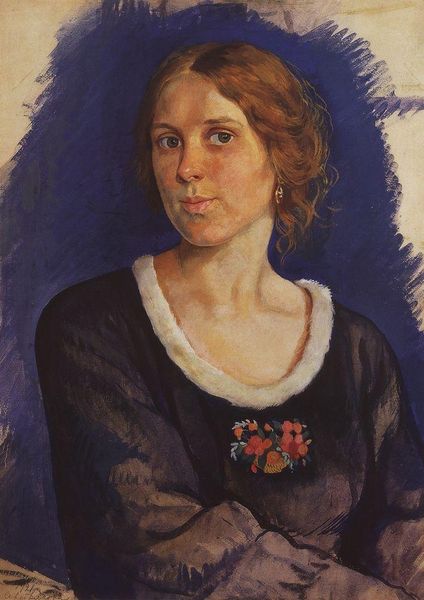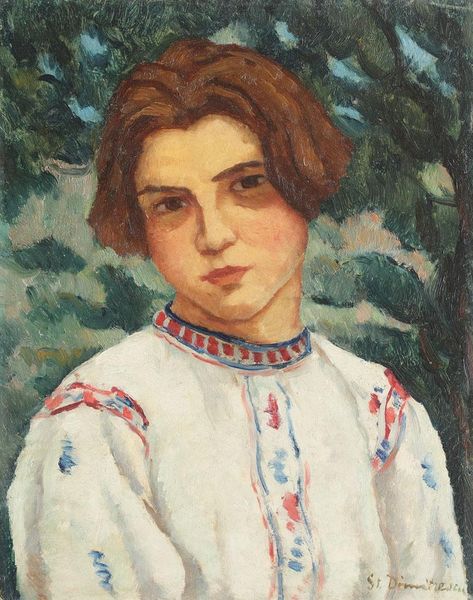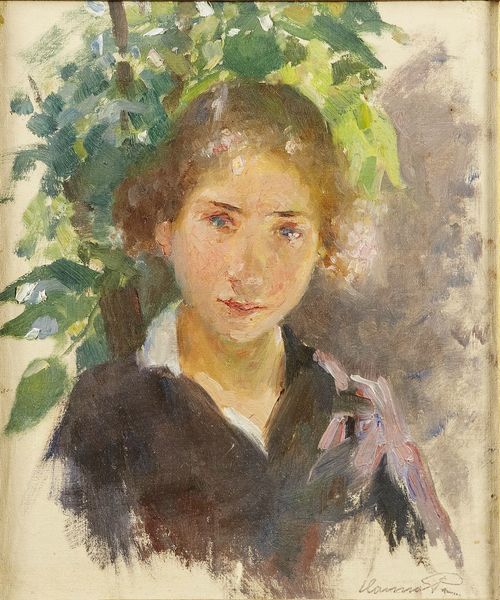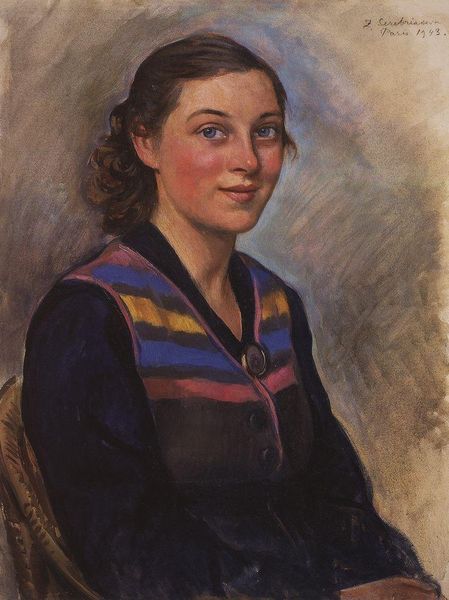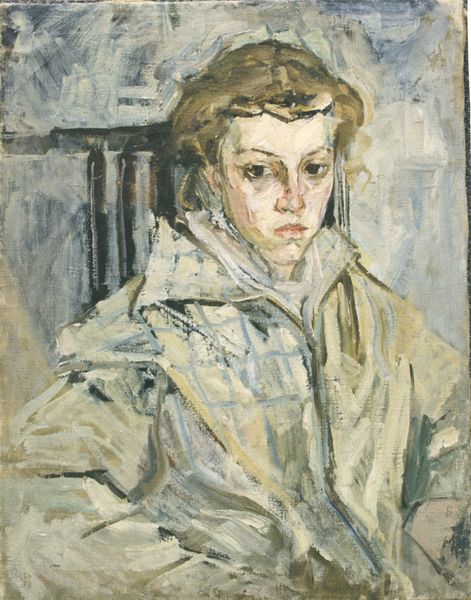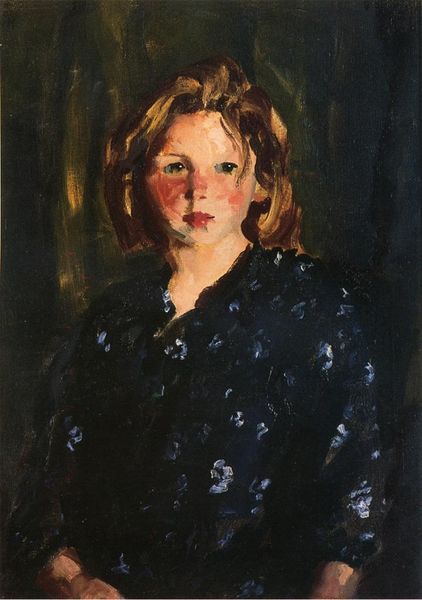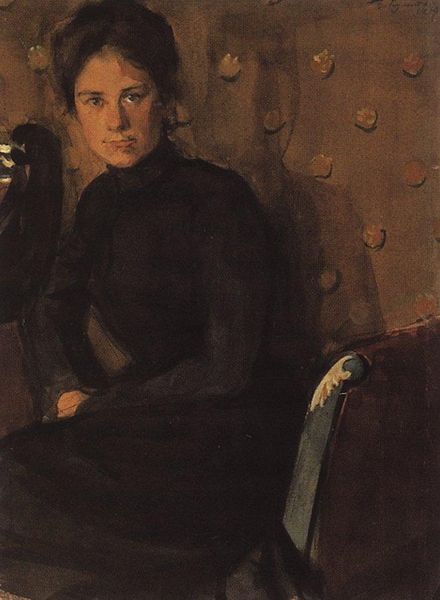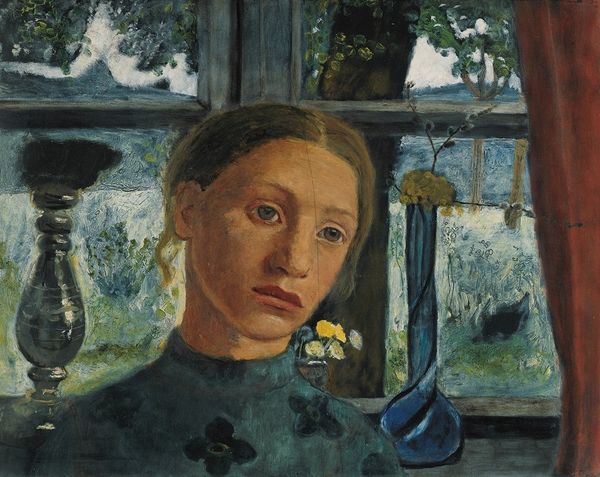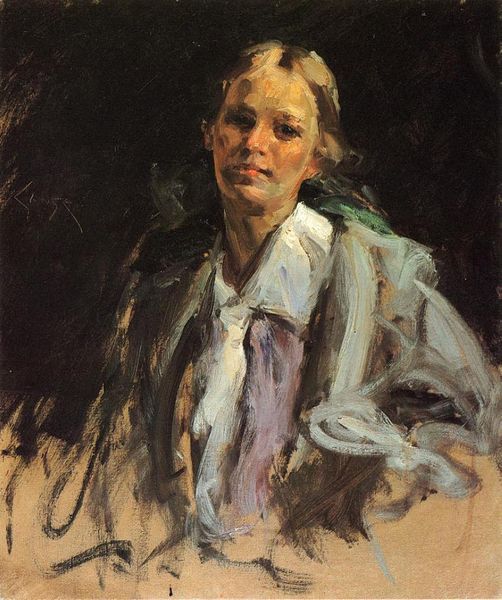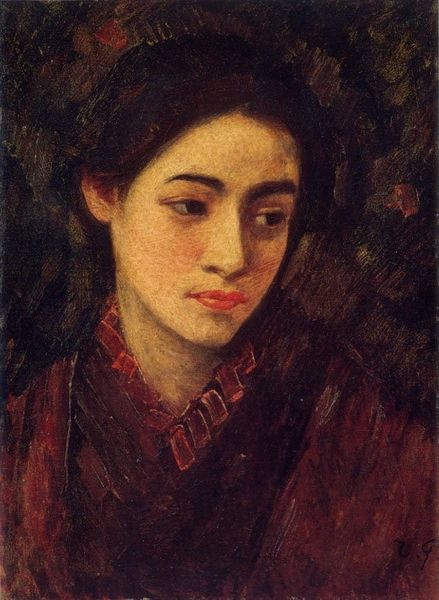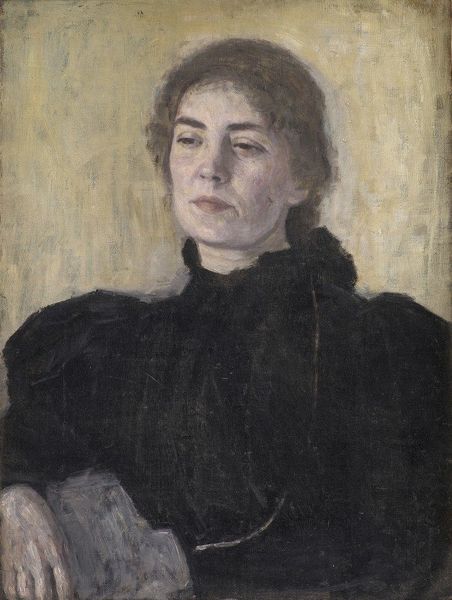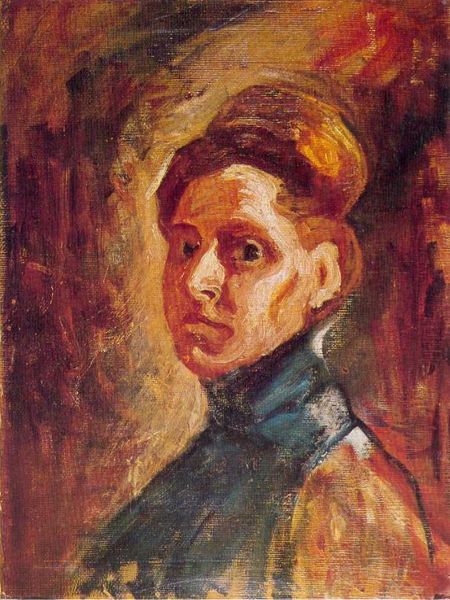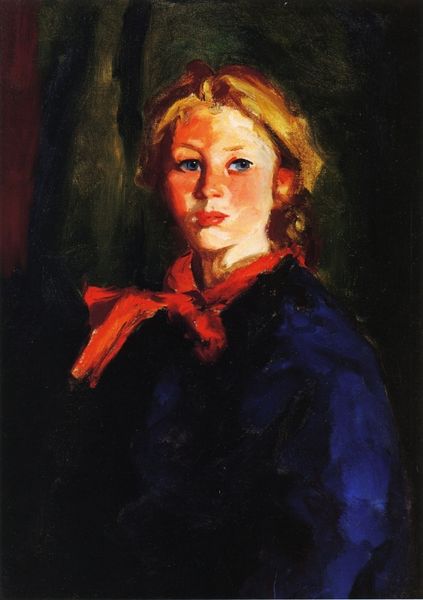
Copyright: Zinaida Serebriakova,Fair Use
Curator: Welcome. We are looking at "Portrait of daughter Katya" by Zinaida Serebriakova, crafted in 1929 using oil paint. Editor: My first thought? The somber tones create an introspective atmosphere, a pensive stillness emphasized by the subject's direct gaze. There's almost a weight to the image. Curator: It’s interesting you say that. The layering of paint is evident; you can almost feel the artist's hand working with the materiality of oil, creating shadows that feel thick, and giving a definite volume. Look at the contrast, for instance, between the dark clothing and the patterned backdrop. The texture seems vital here. Editor: Absolutely. It suggests the socio-economic background; I imagine the conditions of labor during that time – limited material, yet intricate textile tradition visible. Is the somber tonality a function of material accessibility, or a choice, or perhaps it hints at the cultural setting where such textiles were valued? Curator: That's a rich consideration. But focus on the composition, there’s an almost romantic idealization here—note the way the light gently illuminates the subject's face and hands. The overall visual strategy highlights an inherent, rather sublime beauty of form, structure, and execution, even amidst what you might consider simple elements. Editor: I agree there is technique on display. How does her role as a mother impact her craft? It’s a unique perspective, where subject and labor interweave. Consider how those constraints shaped her representation of intimate familial experiences during tumultuous years. Curator: Her position as a female artist significantly informs our understanding of this work and impacts our access to it. It gives insight on how this intimate setting, portraying the artist’s personal life, serves to reinforce societal narratives and potentially dismantle restrictive ideologies. Editor: It's true that the image becomes part of the ongoing conversation around labour and portraiture, then. The visual language here transcends the aesthetic; it touches something much deeper, more tangible about social relationships. Curator: Indeed, thinking of those relationships, viewing the work reveals the complexity that simple compositions like these are capable of transmitting. Editor: Definitely makes you see this image as so much more than an individual expression.
Comments
No comments
Be the first to comment and join the conversation on the ultimate creative platform.
